Many wonder what constitutes a successful SAP Implementation. Everyone wants to have a great success story to talk about, from the top management to the implementation consultant. Success is a relative term.
You will hear: "Successfully went live on the planned date and on budget" - You should ask though whether the initial scope was implemented or did they have to take business processes out of scope in order to make it. - You should also ask how are things now that you went live? Can you ship to your customers without any problems? Is the system performing well? Are the end users fully trained and are they doing their job well? Do you still need consulting support to go through your day-to-day business?
Once you put these questions into perspective you can really define a successful SAP Implementation in many ways and many levels.
Success Factors
Here is a list of factors that determine the relative success of a project as mentioned above.
1. Communication:
For a successful SAP project implementation the number one factor is good communication among the project team members. Everybody claims that they are good communicators and we surely have the technology to maintain constant communication with land-phones and cell-phones and email, but it is true that they are not used to their maximum ability.
For example, when there is an issue, which needs to be communicated to multiple people, usually one will email to a number of people who should really be involved. It is extremely annoying and brakes the communication chain when somebody replies only to the sender of the email without including the rest of the members.
SAP is such integrated software that has constantly touch points among the modules. As such, constant integration among the teams is of paramount importance.
Not only constant communication is important, but GOOD communication is important. People must be very clear about what they are talking about. There is a little phrase: "Mary had a little lamb" - these five short words can create such confusion and result to numerous different meanings;
· Mary used to have a lamb but does not anymore
· Mary had a little lamb which now has grown into a big one
· Mary "had" (i.e. ate) a little lamb
I am sure you can make a lot of other meanings out of this small sentence
Now imagine, if this little sentence can cause such confusion, what mess would be created when dealing with complex business processes, spanning through several departments within an organization and involving anywhere from fifty to thousands of employees, end users, managers, consultants.
So the key is good, accurate, specific and timely communication. Clarify things several times. Explain them as if you were talking to little children.
In order to achieve this type of good communication team members should have their workplaces physically close together. I have seen in many recent cases where the Consulting firm in order to "minimize" costs for the client, they outsource much of the Development ABAP programming work outside the USA and in most cases to other continents.
Based on all the things mentioned above, how can good communication be achieved? It is not possible to simply create a program spec with a description in writing and expect a programmer located on the other side of the planet to figure out what the Business Process is, and what would make the program work according to the client's requirements.
Some consulting firms that do this practice will argue that "it is possible and they have success stories to tell". Well, remember at the beginning of this article what we talked about "Success".
We have witnessed this type of "success" when we went in to resolve the issues of such implementation method. We have witnessed the never-ending consulting hours that the client has to pay because of this implementation method. Often the client is made to sign a contract which says something like "…when the program is complete (but not really working as per the client's requirements - this is not stated anywhere) any change to it would be considered change of scope…". Such practice force the client to either abandon the effort of making the program work because of the extra scope-change cost or keep paying more, in order to try make the program work.
These tactics are unfair to the clients and give a bad name to the Consulting industry.
The client needs to take charge of these situations. Make the rules of good communication. Make the rules of the type of consultants you want to have. Provide the physical and technological infrastructure for the basis of good communication. Do not allow "consulting" companies to hide behind a "Big" corporate name.
Clients deserve the best for the huge amounts of money a SAP Implementation cost. Communicate well, take control of your project and do not be sold on "air-talk".
2. Full Corporate Management Support:
Nothing will happen, nothing will move, unless Management supports it. There must be full and utter commitment and support for the project. If Management does not show both in words and deeds that the SAP Implementation is important than the team members, end users and so on, will not be on-board, will not be dedicated. Without dedication the project is bound to fail.
The ways management provides support for the project is by actively participating in the planning and management of the project. Proactively getting involved not only in the high level plans and decision making, but also in the lower level and just as important activities of the day-to-day activities of the project. Get in touch with the project team members, know and be interested about their job and where they stand. This will motivate and keep people committed.
When management is involved then issues get resolved easier, conflict is overcome faster, because the management know the details of what is going on. How is this achieved? By keeping weekly status and communication meetings (remember communication?) These meetings are not to judge or interrogate anybody. They are done so that all members are informed as to what is happening keep the pulse of the project.
The management should help the project move forward, not hinder it with too many bureaucratic procedures. Keep meetings short and to the point. Maintain one status report, not 15 different reports. Have procedures but do not overdo it to the point where the project becomes inflexible and time consuming to make a decision or take a corrective action. Manage the project and provide people enough freedom to do their work. This will be appreciated.
3. The Project Plan and a Methodology are Guidelines - Not Rulers:
Make a good plan. Make a Realistic plan. Most projects do not have a realistic plan. People think everything can be done really fast. They do not allow enough time for the unforeseen parts of the projects. The vendors delaying to deliver the hardware, running out of disk space, actual training time takes a lot longer that thought, users need more training or they are overloaded with their every day job that cannot attend training and much more. The Master Data are corrupt and we need a new SAP Client. We can make a copy. We plan one day for the copy, but why is it always that a SAP client copy always fails the first time resulting taking two or three days?
Remember, if anything can go wrong, it will go wrong. Allow enough time in your plan for travel time, for public holidays, for vacation. There are so many project managers planning to go-live on January 1 - how foolish, inappropriate and disrespectful to the work and dedication of the people. As soon as Thanksgiving comes around things slow down dramatically and especially the last two weeks of the years are down to a crawl. Take these times of the year into account.
If you cannot go live as per the plan then do NOT go live. It is better, cheaper and safer to delay the go-live and being able to serve your customers. Better than going live just to make a big corporate announcement that we went live as planned but then everybody runs around like headless chickens trying to fix problems, help the users, correct errors, serve your customers.
Allow time for errors. Always have contingency plans. What if the go-live fails. Make sure you have a way to regress to the legacy system to be able to function properly as a business.
the most known SAP Implementation Methodology is ASAP or Accelerated SAP. Consultants should be Certified by SAP. Following this methodology can be very helpful and really accelerating your process. It can also be a inhibitor and delaying factor if it gets overused. ASAP contains a huge amount of tools, templates and instructions of how to implement SAP. Use common sense. There is no reason to try to use one hundred percent of the ASAP methodology. Use only the parts that help you. There are excellent templates for documentation, BPP documents, Training and testing documents, which would take a lot of time to create from scratch.
4. Make a proper Scope:
Which parts of SAP will you implement. Often team members get too excited and want to implement a hundred percent of the processes SAP offers. Not possible. SAP should be implemented according to the Business needs and processes. There was a team member once that wanted to use Classification in the Material Master at a time that it did not make sense for their business. There was another team member that wanted to implement Evaluated Receipt Settlement or ERS for Vendor Invoicing at a time when most invoices did not much the Purchase Orders. These members were warned that these processes were not appropriate. They did not listen. The process failed.
Be realistic. Because SAP can do almost everything it does not mean that you should implement almost everything. You must make sure that your users are technologically advanced, computer literate enough and that they understand the business processes, which will allow them to comprehend and manage the change that such an implementation will bring.
5. Motivate, Appreciate, Reward your people:
It may sound a cliché, but it must be done. Do not do it just to be politically correct. Do it because you mean it, put your soul into it, make it personal. This is one of the few things someone should take personally in business!! People will work twice as hard when they are appreciated. In order to be able to know what you are rewarding people for, you must be involved it their day-to-day business - here come back again the Full Corporate Management Support point mentioned above. A "thank you" goes very long way.
6. Manage Change:
One of the most important factors is how the organization handles changes. This is one of the riskiest part of this business. To make your people understand that change is a good thing. To make the embrace change and make it happened.
This challenge is accomplished with all the above points mentioned, i.e.
- Full Corporate Management Support
- Communication
- The Project Plan and the Methodology
- A proper Scope
- Motivate, Appreciate, Reward your people
If these are followed and executed successfully, people will appreciate and embrace the coming changes. Admittedly, very, very hard thing to achieve for many reasons. Human nature is to avoid change. Therefore, going against human nature is starting off the wrong way. People are afraid of business change because often they are afraid of their job security - unfortunately often rightly so.
7. Politics:
Every project has them (politics) to some degree. Make sure politics and hidden agendas do not derail your implementation process. Stay focused and bring out in the open differences sooner than later. Do not allow people with hidden agendas mislead the project to the wrong direction. Stop this soon and stop it hard. Politics should not be tolerated and should be dealt with firmly and tactfully at the same time.
8. Find Excellent Resources:
The client, the management, must be involved in the consulting recruitment process. Do not simply trust the Consulting firm. Make sure the consultants know their stuff. Make sure the consultants do not have "layers" of intermediaries before they reach you - the final client. The more layers, the more the Consultant's rate is reduced, which in turn it means that the consultant who are willing to work for the lower rate are usually the least knowledgeable. In life you get what you pay for - and even though you as a client might be paying dearly for the consultant, too many layers reduce the consultant's rate and therefore the quality.
The next time someone says "we had a successful project", analyze the facts first to determine the degree of success. Some consulting firms (not to mention names) when their relative success of a project is pretty low, they "declare victory and leave the project"!! They announce to the world of the "success" of the project and then they move on leaving the client to suffer the consequences both in business and cost terms.
(Thanks to Evolutionary Consulting, Inc)




 In addition, Data dictionary works like a remote control to the actual database. Developers create the database objects on the data dictionary and activate them; in the background the system will automatically generate the corresponding SQL statements and create the objects on the actual database.
In addition, Data dictionary works like a remote control to the actual database. Developers create the database objects on the data dictionary and activate them; in the background the system will automatically generate the corresponding SQL statements and create the objects on the actual database. 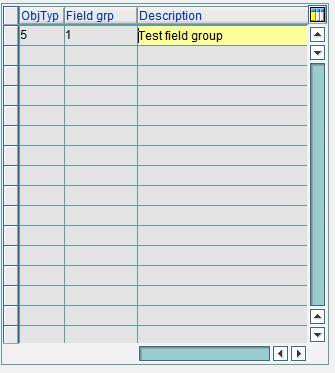

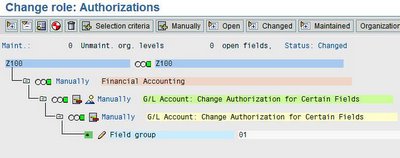

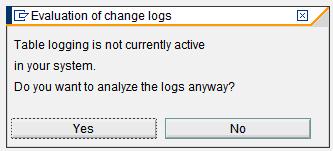


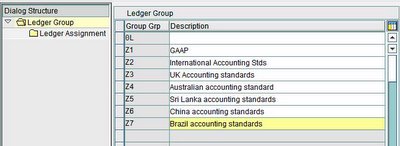
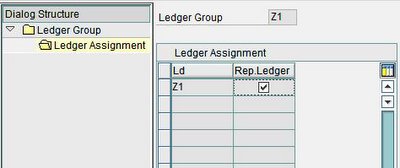





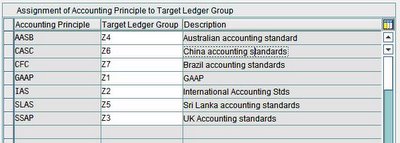




 2. SAP distribution presentation configuration: the application and database servers are combined on one computer and the presentation servers run separately. This is used for smaller systems, and is often seen on a development system.
2. SAP distribution presentation configuration: the application and database servers are combined on one computer and the presentation servers run separately. This is used for smaller systems, and is often seen on a development system. 3. SAP two-tier client/server configuration: the presentation and application servers are combined and the database server is separate. This configuration is used in conjunction with other application servers. It is used for a batch server when the batch is segregated from the online servers. A SAPGUI is installed on it to provide local control.
3. SAP two-tier client/server configuration: the presentation and application servers are combined and the database server is separate. This configuration is used in conjunction with other application servers. It is used for a batch server when the batch is segregated from the online servers. A SAPGUI is installed on it to provide local control.

